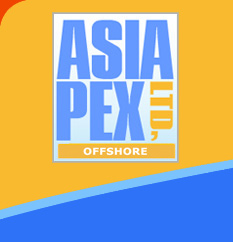PROCESS OF MANUFACTURE OF CHAIN
|
1. Raw Material
All bar stock is sourced from approved mills, in accordance with the Classification Society Approval Procedures. Chemical composition is verified using a fully automatic atomic emission spectrometer. |
|
2. Bar Cutting
All raw material bar stock is checked before entering the production process to ensure compliance with the purchase order requirements in terms of dimensional tolerance, chemical analysis and mechanical properties. Material is then cut to predetermined link lengths, depending upon chain type (stud link or studless). |
|
3. Heating
Each link is heated by electric means, either via induction or resistance method, using state of the art techniques, which are closely controlled and monitored. The correct forging temperature is important so as to maximize the mechanical integrity of the link, optimizing the performance characteristics of the finished product. |
|
4. Bending
Each link is bent over a mandrel specifically designed for the size and type of chain being manufactured. Link dimensions and alignment are checked regularly to verify the accuracy of the tooling as well as the actual chains in manufacture. |
|
5. Welding
Each link is transferred via carousel to the flash butt welding station whereby electric current is passed through copper clamps to heat the link to specific welding temperature, ensuring maximum penetration and welding efficiency. |
|
6. Trimming
Excess weld or “flash”, is then removed from the link by automatic process using special trimming tools which create a smooth, flush finish around the weld area. This is important to ensure there is no possibility the link could foul against adjacent equipment (windlass or fairleader) or precipitate a stress fracture within the link. |
|
7. Stud Setting and Link Sizing
Studs are placed in the link, which is then pressed onto the stud so that there is a good, snug fit, minimizing the possibility of stud movement during deployment and use. Studless links are pressed to the correct size to give a uniform shape to prevent the chain from twisting or snagging either when lifting into the chain locker or in a permanent mooring application. |
|
8. Stud Welding
If necessary, studs are welded in accordance with established techniques and procedures. Strict welding control minimizes the risk of fatigue related cracking and subsequent link failure. |
|
9. Heat Treatment
Our heat treatment plants, all computer controlled, with a full range of treatments, including normalizing, water quench, oil quench, “double quench” and tempering. The metallurgical structure of each link is closely controlled to achieve the mechanical properties specified by the customer or Classification Society. |
|
10. Proof and Break Load Test
Every link of chain is tested on one of 3 linear test beds, with a maximum capacity of 20,000kN, which means that we can offer chains in a full range of sizes, grades and continuous lengths. All testing processes are closely monitored by the in-house inspection team, as well as the relevant Classification Society. |
|
11. Shot Blasting
Performed prior to NDT to ensure surface cleanliness and maximize efficiency of MPI, UT and visual inspection process. |
|
12. Metallurgical Test
Chain specimens are subjected to full mechanical testing procedures to check tensile strength, impact resistance etc. in accordance with Classification Society requirements. Grain size, distribution and inclusions are checked by microscopic examination. |
|
13. Non Destructive Test and Final Inspection
Highly skilled and fully qualified engineers perform a complete set of Magnetic Particle Inspection (MPI) and Ultrasonic Tests (UT) to optimize the physical integrity of each link. |
|
14. Trial Fit
We ensure compatibility of all interfacing components prior to dispatch to ensure there are no costly problems during installation or operation. |
|
15. Painting and Coating
Whilst it has been proven that painting or coating offers no notable benefit in terms of preservation or corrosion resistance, we can paint and/or color-code the chains to client's specific requirements. |
|
16. Packaging and Dispatch
Safe packing and handling are essential for a smooth load out, with certified twist free bundles to facilitate subsequent discharge and installation on site. |
|

